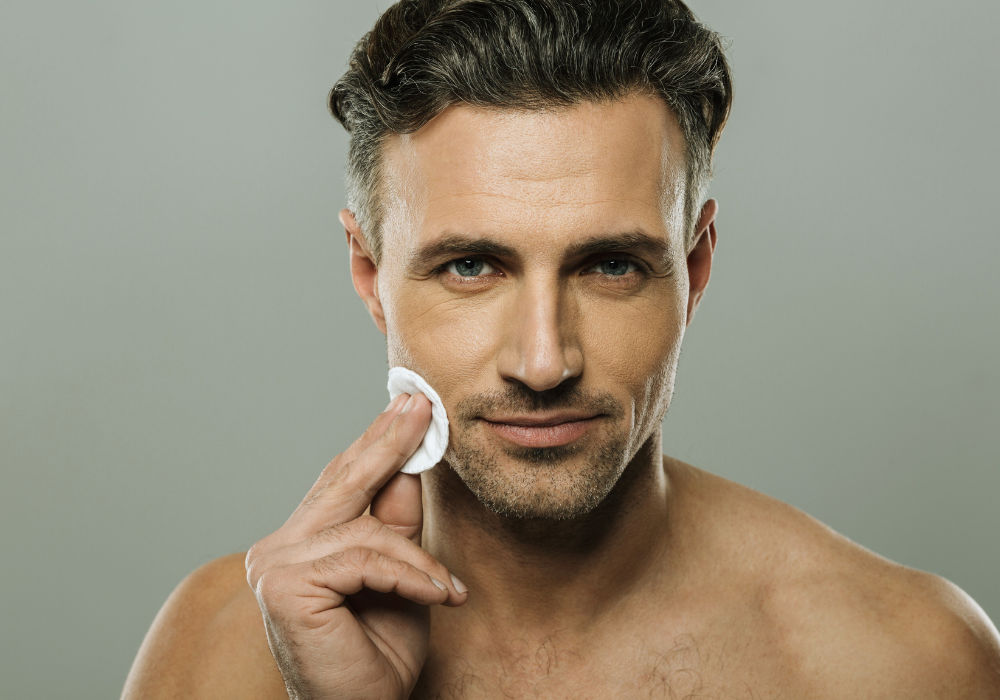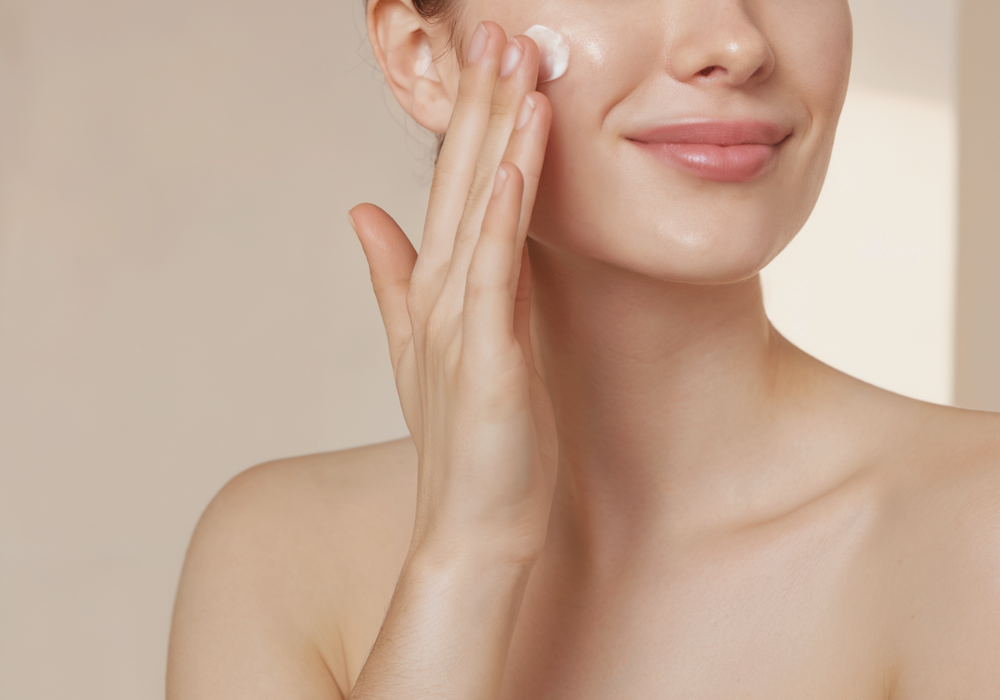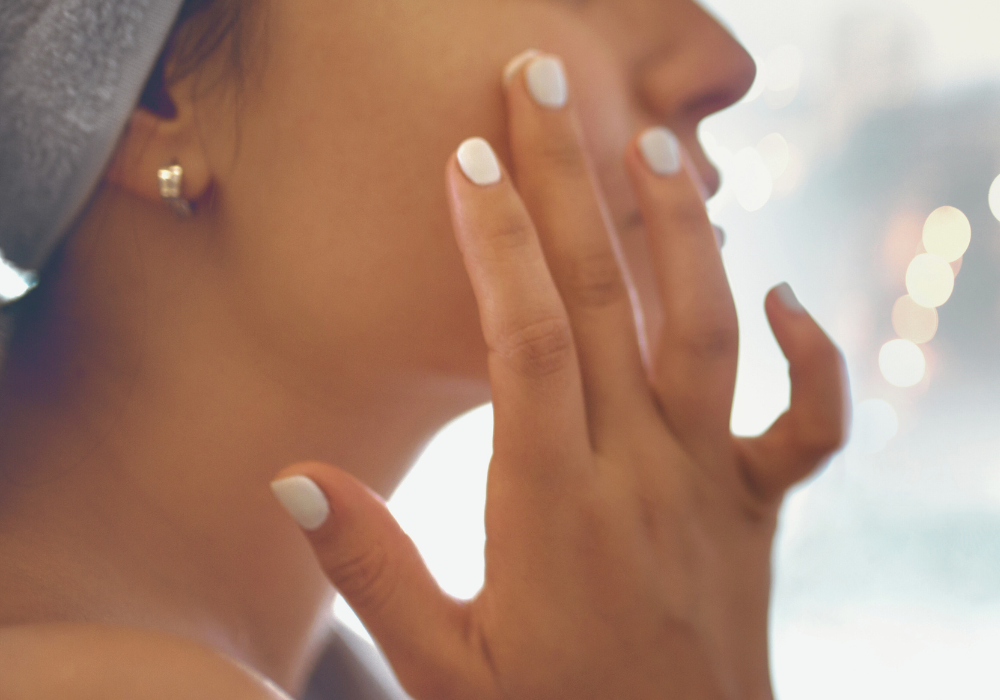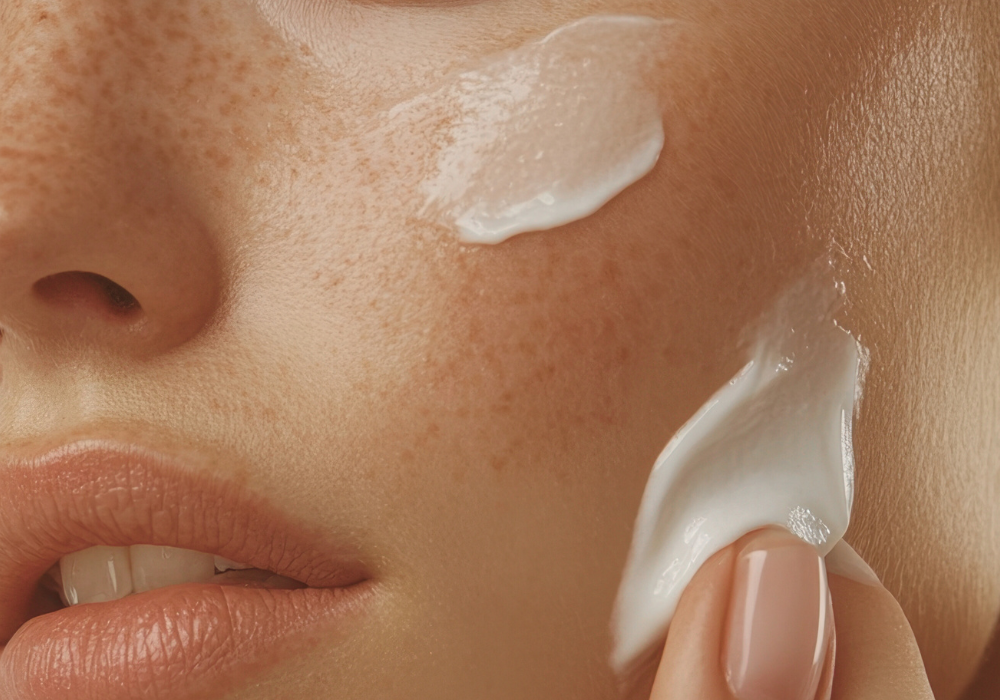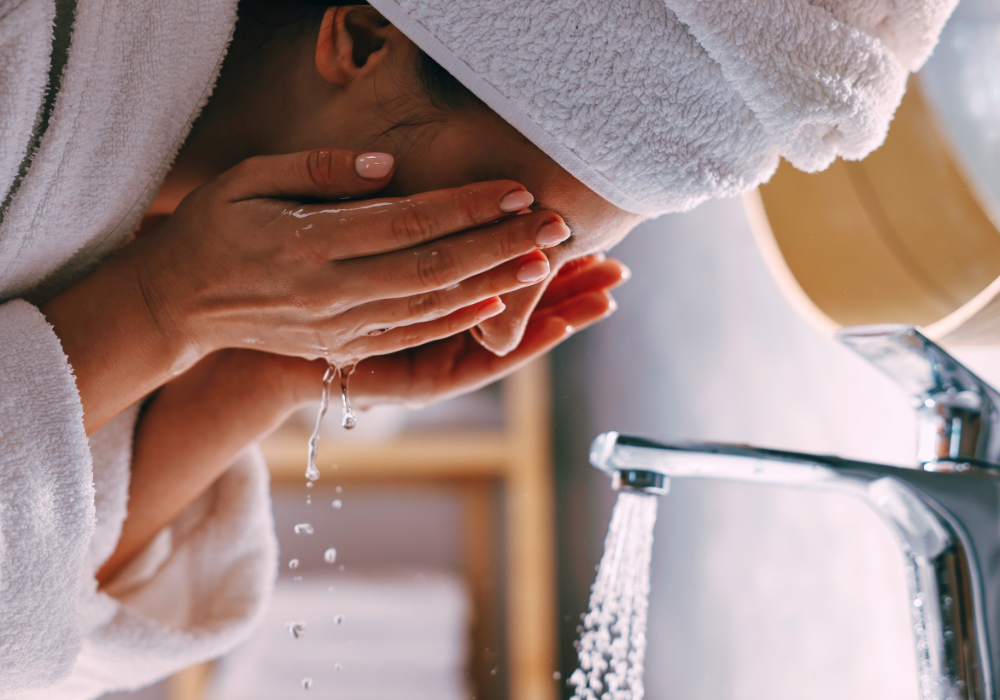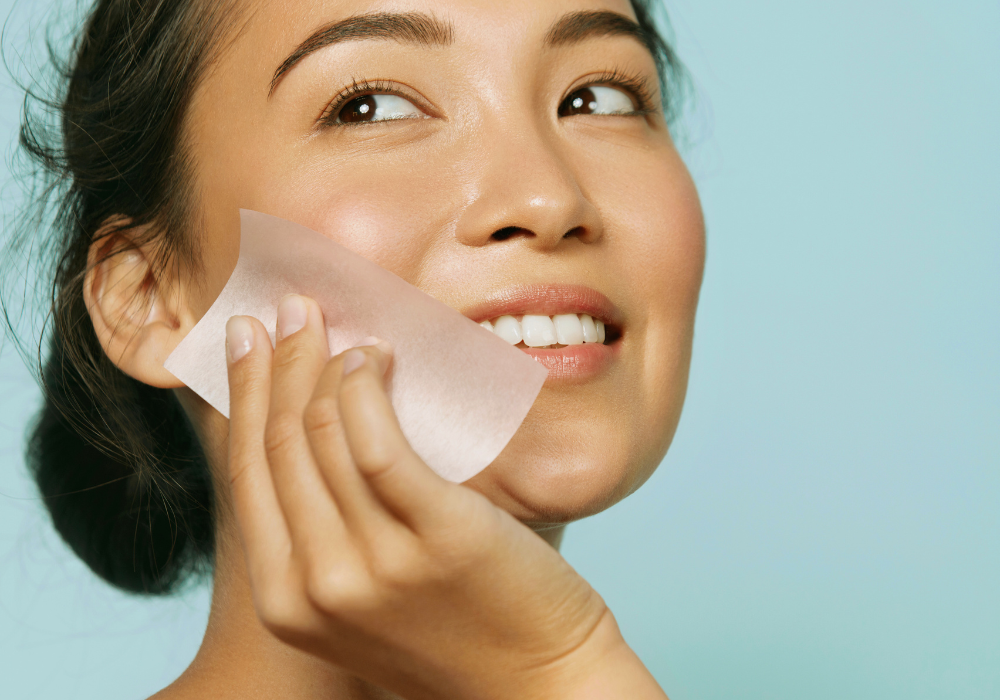Men's skin produces approximately double the sebum compared to women's skin due to higher testosterone levels and larger sebaceous glands. This biological reality makes oil control a persistent challenge, yet the most common solution—aggressive cleansing and harsh products—actually backfires. When skin becomes over-dried, it triggers compensatory oil production, creating a frustrating cycle where removing oil causes even more oiliness. The solution requires understanding how sebaceous glands function and using science-backed cleansers that balance oil removal with barrier protection.
Key Takeaways
-
Male skin is 10-20 percent thicker than women's skin and contains more collagen, leading to higher sebum production
-
Sebum rates exceeding 1.5mg/10cm² every three hours are considered excessive and result in oily skin
-
Over-cleansing damages the skin barrier and paradoxically triggers the body to produce even more sebum as a protective response
-
pH-balanced cleansers close to skin's natural pH 5.5 cause 30-40% less barrier damage than alkaline products
-
Chemical exfoliants with 2-5% niacinamide reduce sebum production while strengthening skin barrier
-
Lightweight moisturization is essential even for oily skin—dehydrated skin overcompensates by producing more oil
-
Visible improvements in oil balance require 6-8 weeks of consistent gentle care, with full barrier restoration taking 8-12 weeks
Understanding Sebum Production and Sebaceous Glands in Men's Skin
Sebum is a viscous fluid composed of squalene, wax esters, triglycerides, free fatty acids, cholesterol esters, and free sterols. Sebaceous glands located under the skin's surface produce this oil at an average rate of 1mg/10cm² every three hours in adults. When production exceeds this baseline, skin becomes visibly oily with enlarged pores and increased shine.
Men experience higher sebum output because androgens—particularly testosterone and its derivative 5α-dihydrotestosterone (DHT)—control sebaceous gland activity. Research demonstrates the absolute androgen control of sebum production: subjects with complete androgen insensitivity had no demonstrable sebum production whatsoever.
How Sebaceous Glands Function
Sebaceous glands contain steroidogenic enzymes that convert DHEA and DHEAS into testosterone and DHT. This process explains why:
-
Sebum production remains relatively high at birth
-
Output decreases until puberty
-
Dramatic increases occur during adolescence
-
Production doesn't decline until the sixth or seventh decade for men
Why Men Produce More Sebum Than Women
Male skin differs structurally from female skin in ways that directly impact oil production:
-
Larger sebaceous glands producing more oil per gland
-
Enlarged pores allowing greater sebum output
-
Higher testosterone levels continuously stimulating gland activity
-
Thicker skin structure with more robust collagen networks
Males aged 20-25 with oily skin show sebum excretion rates of 1.87 arbitrary units per minute compared to 1.09 for non-oily skin types.
The Role of Sebum in Skin Health
Despite causing cosmetic concerns, sebum serves essential protective functions. This natural oil creates a barrier that locks in hydration, prevents water loss, and protects against environmental aggressors. The goal isn't eliminating sebum entirely—it's regulating production to normal levels while maintaining these protective benefits.
The Over-Drying Trap: Why Harsh Oil Control Backfires
The intuitive response to oily skin—washing more frequently with stronger products—creates the exact problem it attempts to solve. This paradox stems from how skin responds to barrier damage.
How Over-Cleansing Triggers More Oil
The skin barrier functions as a "brick wall" where skin cells are bricks and natural lipids, fatty acids, and natural moisturizing factors are mortar. When harsh surfactants strip away these lipids, the body interprets this as a threat and instructs sebaceous glands to increase production.
Studies show that when skin becomes dry, it produces more sebum as a protective response, making moisturization essential even for oily skin types. Research on males with oily skin found that one hour after sebum removal, sebum levels recover to 70-90% of original levels.
Signs Your Skin Is Over-Dried
Your skin sends clear signals when aggressive oil control has compromised the barrier:
-
Persistent tightness after cleansing that doesn't resolve quickly
-
Simultaneous oiliness and flaking in different facial zones
-
Increased sensitivity to previously tolerated products
-
Stinging or burning when applying skincare
-
Rough texture despite regular exfoliation
-
Redness and blotchiness without clear cause
-
Midday oil surge worse than before starting aggressive treatment
The Moisture Barrier Breakdown Cycle
Barrier damage creates a self-perpetuating cycle. Hot water can reduce the protective lipid layer by up to 99%, leading to increased transepidermal water loss. This dehydration triggers emergency sebum production, causing more oiliness, which prompts more aggressive cleansing, which causes more damage.
When pH rises to 10 (high alkalinity from harsh soaps), stratum corneum swelling increases and lipid rigidity alters, even without surfactants present.
Building an Effective Men's Skincare Routine for Oily Skin
A routine focused on balance rather than elimination delivers sustainable oil control without triggering compensatory production.
Essential Morning Steps for Oil Control
Step 1: Gentle Cleansing
-
Use lukewarm water, never hot
-
Apply a pH-balanced, sulfate-free cleanser
-
Massage for 30-60 seconds using circular motions
-
Rinse thoroughly and pat (don't rub) dry
The Exfoliating Daily Cleanser delivers this gentle approach through triple action hydroxy acids (2.4% total) that remove excess oil while charged hyaluronic acid (0.1%) maintains hydration, preventing the over-drying that triggers rebound sebum production.
Step 2: Lightweight Hydration
-
Apply while skin is still slightly damp
-
Use oil-free, non-comedogenic formulas
-
Focus on water-based humectants
Step 3: SPF Protection
-
Choose mattifying sunscreen formulas
-
Look for zinc oxide or titanium dioxide bases
-
Avoid heavy creams that add shine
Evening Routine for Balanced Skin
Step 1: Remove Daily Buildup
-
Cleanse again with same gentle approach
-
Focus on T-zone where oil accumulates
-
Avoid double cleansing unless wearing heavy sunscreen
Step 2: Treatment Application
-
Apply targeted serums to address specific concerns
-
Allow 2-3 minutes for absorption
-
Use lightweight formulas
Step 3: Barrier Support
-
Apply non-comedogenic night moisturizer
-
Include barrier-repair ingredients
-
Keep formulas light to prevent morning oiliness
How Often to Cleanse Without Over-Drying
Research on cleansing frequency shows clear limits:
-
Maximum twice daily for all skin types
-
Always after exercise or heavy sweating
-
Never more than three times in 24 hours under any circumstances
The recovery timeline matters: skin barrier restoration takes 8-12 weeks with consistent gentle care, meaning patience is essential for seeing results.
How to Choose Men's Skincare Products That Balance Oil and Hydration
Product selection determines whether your routine succeeds or perpetuates the over-drying cycle.
Key Ingredients for Oil-Prone Skin
Sebum-Regulating Actives:
-
Niacinamide (2-5%): Reduces sebum production, strengthens barrier, minimizes pore appearance
-
Zinc PCA: Inhibits the enzyme converting testosterone to DHT, providing antibacterial benefits
-
Salicylic Acid (0.5-2%): Penetrates oil-filled pores to exfoliate from within
Hydration Without Heaviness:
-
Hyaluronic Acid: Binds water molecules for plumping without oil
-
Glycerin: Research shows it's the most effective humectant, more than doubling hydration
-
Ceramides: Repair barrier without clogging pores
The Exfoliating Daily Cleanser combines these principles through beta-hydroxy acid (0.4% salicylic acid) for pore refinement, alpha-hydroxy citrus extracts (1%) for surface exfoliation, and gluconolactone (1%) for hydrating exfoliation—all formulated at skin's natural pH (4.5-5.5).
Understanding Product pH and Skin Health
pH matters significantly for barrier preservation. Cleansers with neutral or acidic pH close to skin's normal pH 5.5 cause 30-40% less barrier damage than alkaline products. When evaluating products, look for pH listed on packaging or contact manufacturers directly.
The Science of Exfoliation for Oil Control Without Stripping
Chemical exfoliation removes dead skin cells and excess sebum without the mechanical damage of scrubs.
AHA vs BHA vs PHA: Which Acids Work Best
Alpha Hydroxy Acids (AHAs):
-
Water-soluble, work on skin surface
-
Glycolic and lactic acids most common
-
Best for texture and brightness
-
Can increase sun sensitivity
Beta Hydroxy Acids (BHAs):
-
Oil-soluble, penetrate into pores
-
Salicylic acid is primary BHA
-
Target congestion and blackheads
-
Less sun sensitivity than AHAs
Poly Hydroxy Acids (PHAs):
-
Larger molecular size
-
Gentler exfoliation
-
Hydrating properties
-
Suitable for sensitive skin
Safe Exfoliation Frequency for Men
The Exfoliating Daily Cleanser contains triple action hydroxy acids including beta-hydroxy acid (0.4% salicylic acid) for pore refinement, alpha-hydroxy citrus extracts (1%) for surface exfoliation, and gluconolactone (1%) for hydrating exfoliation—formulated to be gentle enough for daily use morning and night.
For stronger exfoliating treatments:
-
Start once weekly and observe skin response
-
Maximum three times weekly for most men
-
Reduce frequency if experiencing redness or sensitivity
-
Always follow with SPF during daytime
Treating Existing Dry Skin While Managing Oil Production
When over-aggressive oil control has already damaged the barrier, recovery requires specific strategies.
Emergency Hydration for Over-Dried Skin
Immediate Relief Protocol:
-
Stop all active ingredients (acids, retinoids) temporarily
-
Switch to ultra-gentle, fragrance-free cleanser
-
Apply barrier-repair moisturizer multiple times daily
-
Use lukewarm water only
-
Avoid all exfoliation for 2-3 weeks
Recovery Ingredients:
-
DL-Panthenol (Pro-vitamin B5): Soothes skin and supports barrier recovery
-
Ceramides: Restore lipid structure
-
Centella Asiatica: Reduces inflammation
-
Colloidal Oatmeal: Immediate soothing
The Exfoliating Daily Cleanser contains DL-Panthenol (1% Pro-vitamin B5) that soothes skin and supports barrier recovery while the rich, creamy formula rinses clean without residue or tightness.
Repairing the Moisture Barrier Fast
Barrier recovery follows predictable timelines:
-
Week 1-2: Reduced tightness and sensitivity
-
Week 3-4: Flaking subsides, texture improves
-
Week 6-8: Oil production begins normalizing
-
Week 8-12: Full barrier restoration achieved
During recovery, consistency matters more than product variety. Stick with gentle routine even when tempted to address returning oil.
Managing Combination Skin Zones
Many men experience simultaneous dryness and oiliness in different facial areas:
T-Zone (Forehead, Nose, Chin):
-
May tolerate gentle exfoliation sooner
-
Can handle lighter moisturizers
-
Focus oil-control products here
Cheeks and Perimeters:
-
Often drier, especially if over-cleansed
-
Need more barrier support
-
May require richer moisturization
Multi-Masking Strategy: Apply different treatment masks to different zones simultaneously rather than treating entire face uniformly.
Dermatologist-Recommended Solutions for Extremely Dry and Oily Skin
Some situations require professional intervention beyond over-the-counter solutions.
When to Seek Professional Help
Consult a dermatologist when experiencing:
-
Persistent issues despite 3 months of proper routine
-
Severe acne with cysts or nodules
-
Possible rosacea (persistent redness, flushing)
-
Seborrheic dermatitis (yellowish, greasy scales)
-
Sudden changes in skin behavior without clear cause
Medical Treatments for Severe Imbalance
Prescription Options:
-
Topical retinoids (tretinoin, adapalene) regulate cell turnover and reduce oil
-
Oral isotretinoin for severe cases significantly reduces sebaceous gland size
-
Hormonal treatments in specific situations
-
Professional chemical peels with higher concentrations
Combining Professional and At-Home Care
Professional treatments work best when supported by appropriate home care:
-
Continue gentle cleansing even when using prescription actives
-
Increase moisturizer use when starting drying medications
-
Allow 2-3 months for prescription treatments to show results
-
Communicate all product changes to dermatologist
Common Men's Skincare Mistakes That Worsen Oil and Dryness
Understanding common errors helps avoid perpetuating the oil-dryness cycle.
Why Hot Showers Sabotage Oil Control
Hot water causes multiple forms of barrier damage:
-
Strips protective lipid layer rapidly
-
Opens pores excessively
-
Triggers compensatory oil production
-
Causes inflammation and redness
The protective lipid layer reduction from hot water can approach 99%, leading to severe transepidermal water loss.
The SPF-Skipping Mistake Oily Skin Makes
Men with oily skin often skip sunscreen fearing added greasiness, but UV damage:
-
Thickens skin, making pores appear larger
-
Triggers inflammation that stimulates oil glands
-
Damages collagen, reducing skin's structural support
-
Causes long-term texture problems
Solution: Choose oil-free, mattifying SPF 30+ formulas specifically designed for oily skin.
Patience: How Long Results Actually Take
Dr. Hodes advises to "try not to rub too hard" during cleansing because skin produces more oil when irritated.
Realistic Timelines:
-
Week 2-3: Initial reduction in excessive oiliness
-
Week 4-6: Visible improvement in balance
-
Week 6-8: Optimal results for most men
-
Week 8-12: Full barrier restoration
Switching products before 6-8 weeks prevents accurate assessment of effectiveness.
Building Long-Term Skin Balance: Maintenance and Adjustments
Sustainable oil control requires ongoing attention and seasonal modifications.
Adapting Your Routine to Seasons
Summer Adjustments (Increased Heat and Humidity):
-
May cleanse twice daily with lighter formulas
-
Switch to gel-based moisturizers
-
Increase SPF reapplication frequency
-
Use oil-blotting papers sparingly if needed
Winter Modifications (Cold, Dry Air):
-
Maintain gentle cleansing frequency
-
Increase moisturizer richness slightly
-
Add humidifier to bedroom
-
Protect skin from harsh wind
Research confirms sebum production increases 30%+ during spring/summer due to higher temperatures and humidity.
When to Adjust Product Frequency
Monitor these indicators for routine adjustments:
Increase Treatment Frequency When:
-
Breakthrough oiliness returns consistently
-
Pore congestion increases
-
Skin tolerates current routine well
-
Seasonal shifts toward warmer weather
Decrease Treatment Frequency When:
-
Any tightness or discomfort appears
-
Unexpected flaking develops
-
Sensitivity to products increases
-
Seasonal shifts toward colder weather
Maintaining Results Over Time
The Exfoliating Daily Cleanser offers consistency across routine adjustments—suitable for all skin types (Normal, Dry, Combination, and Oily) and gentle enough for daily use morning and night, providing consistent results with approximately 2 months consumption per 60ml bottle.
Long-Term Success Strategies:
-
Take monthly progress photos in consistent lighting
-
Keep journal of products and environmental factors
-
Adjust gradually rather than overhauling entire routine
-
Maintain core gentle cleansing even when adding treatments
-
Schedule annual dermatologist check-ins for professional assessment
Why Kipi's Exfoliating Daily Cleanser Delivers Balanced Oil Control
Most men's skincare products force a choice between effective oil removal and barrier protection. Kipi eliminates this compromise through science-backed formulation designed specifically for the oil-control challenge.
Multifunctional Formula Addresses Multiple Needs
The Exfoliating Daily Cleanser delivers three core benefits in one formula:
-
Exfoliates & Refines → Triple action hydroxy acids (2.4% total concentration) clear pores and smooth texture without harsh scrubbing that damages skin
-
Removes Impurities → Beta-hydroxy acid (0.4% salicylic acid) lifts excess oil while alpha-hydroxy citrus extracts (1%) remove debris without triggering compensatory production
-
Hydrates & Balances → Charged hyaluronic acid (0.1%) and moisture-locking natural sugars refresh skin and restore hydration that remains even after rinsing
Formulated at Skin's Natural pH
Unlike alkaline cleansers that cause 30-40% more barrier damage, Kipi's formula maintains pH 4.5-5.5—matching skin's natural pH to minimize disruption while effectively removing excess sebum.
Gentle Enough for Daily Use
The Exfoliating Daily Cleanser's balanced concentration of acids enables twice-daily use without the over-exfoliation that triggers increased oil production.
Barrier Support Built Into Cleansing
While most cleansers focus solely on removal, Kipi incorporates DL-Panthenol (1% Pro-vitamin B5) that actively soothes and supports barrier function during the cleansing process. This prevents the tight, stripped feeling that signals barrier damage.
Lightweight, Residue-Free Formula
The rich, creamy texture provides sensory satisfaction without leaving the residue that contributes to congestion. The formula rinses completely clean, leaving skin refreshed and balanced—never tight or oily.
Premium Skincare Simplified
At $36.00 for a 60ml TSA-approved size lasting approximately 2 months (or Subscribe & Save 20% for $28.80), Kipi delivers dermatologist-level formulation at accessible pricing. The sulfate and paraben-free, vegan and cruelty-free formula ships in 1-2 business days with free shipping and returns.
For men tired of choosing between effective oil control and healthy skin, Kipi's approach offers the balanced solution backed by proven science.
Frequently Asked Questions
Can oily skin be dehydrated at the same time?
Yes, this condition is extremely common and often misunderstood. Oily skin refers to sebum (oil) production, while dehydration refers to water content in skin. You can simultaneously produce excess oil while lacking adequate hydration. This typically occurs when harsh products strip the moisture barrier, causing the skin to lose water while sebaceous glands overcompensate by producing more oil. Signs include surface oiliness combined with flaking, tightness, and dull texture. The solution requires adding lightweight, water-based hydration while using gentle oil-control methods that don't compromise the barrier.
How long does it take to balance oily skin without over-drying?
Expect to see initial improvements within 2-4 weeks of switching to gentle cleansers and proper hydration. Optimal balance typically requires 6-8 weeks of consistent routine, as this allows skin to adjust and stop compensatory oil production. Full barrier restoration takes 8-12 weeks with proper barrier-focused care. If you've been using harsh products for months or years, patience is essential—your skin needs time to recalibrate its natural oil production levels. Take weekly progress photos to track subtle improvements you might not notice day-to-day.
Should men with oily skin skip moisturizer?
No, this is one of the most damaging myths in men's skincare. Dr. Seemal Desai explains that "if you're using skin-drying products" like acne face wash, your body may respond by producing even more grease, and that excess oil can clog pores and cause breakouts. Using a moisturizer hydrates skin, preventing it from producing too much oil. The key is choosing the right type: lightweight, oil-free, non-comedogenic formulas with water-based hydration ingredients like hyaluronic acid or glycerin. Skipping moisturizer triggers the exact compensatory oil production you're trying to avoid.
What's the difference between oil-free and oil-control products?
Oil-free products contain no oils in their formulation, making them suitable for oily skin types who don't need additional lipids. These typically use water-based hydration and silicone-based textures. Oil-control products actively work to reduce sebum production through ingredients like niacinamide, zinc PCA, or salicylic acid—they may or may not contain oils themselves. For optimal results, men with oily skin should look for products that are both oil-free AND contain oil-control actives. Check ingredient lists rather than relying solely on marketing claims, as "oil-free" doesn't automatically mean the product regulates sebum production.
Can exfoliating daily damage oily skin?
It depends entirely on the type and concentration of exfoliation. Harsh physical scrubs or high-concentration acids used daily will absolutely damage skin, compromise the barrier, and trigger compensatory oil production. However, gentle chemical exfoliants formulated specifically for daily use—like the combination of low-concentration AHAs, BHAs, and PHAs in Kipi's Exfoliating Daily Cleanser—can be used twice daily safely. The key factors are pH balance, appropriate concentrations, and including hydrating ingredients. If you experience any redness, stinging, or increased sensitivity, reduce frequency immediately.
Why does my skin produce more oil after I wash it?
This phenomenon indicates over-cleansing or use of harsh products that strip the skin barrier. When you remove too much natural oil through aggressive washing, hot water, or alkaline cleansers, your skin interprets this as an emergency. Sebaceous glands receive signals to increase production to restore the protective lipid layer. Additionally, damaged barriers lose water rapidly through transepidermal water loss, further triggering the skin's defense mechanisms. The solution is counterintuitive: switch to gentler cleansing with lukewarm water, pH-balanced products, and immediate moisturization. Within 2-3 weeks of this approach, the rebound oil production typically decreases as your skin stops perceiving threat.
